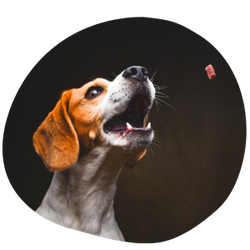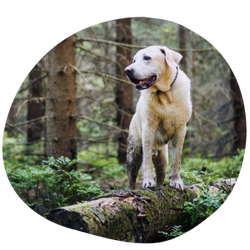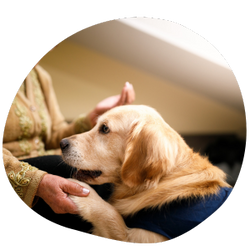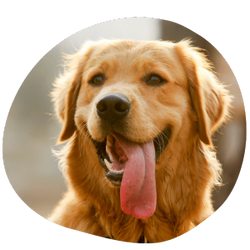No Products in the Cart
Top 10 Dog Sports

Hi, Jope's squad!
Ready for an exciting journey, both you and your pet? With so many outstanding dog games, you and your dog may have fun, get in shape, and strengthen your relationship. Dog agility courses and dog dock diving are great ways to get your dog running, chasing, and playing like it is nothing unusual.
Dog games are not just a way for us to keep our dogs healthy and in shape; they are also a way for us to better connect with our pets. No matter what kind of dog you have or how much energy you have, there is a sport for you. Many dogs love to run, and intelligent dogs are great at solving problems.
People worldwide are interested in these ten dog games and the dogs who play them.
1. Agility
Imagine leading your dog through a fast-paced obstacle course with jumps, tunnels, weave poles, and see-saws—all against the clock. That is canine agility. This is an exciting sport where the most precise and fastest team prevails.

Benefits for Dogs:
-
Increases coordination and physical fitness; keeps your dog in the best shape.
-
Improves mental stimulation by tackling complex challenges for your dog.
-
Increases trust and teamwork, therefore strengthening the relationship between dog and owner.
Basic Training Tips:
-
Start with easy challenges; progressively raise the challenge as your dog grows confident.
-
Use positive reinforcement—praise and treat your dog.
-
Practice often; consistency is essential for developing your dog's confidence and ability.
2. Flyball

Benefits for Dogs:
-
Excellent for high-energy dogs as it is vigorous cardiac activity.
-
Boosts discipline and focus; helps your dog remain alert and sharp.
-
Motives socializing with other canines and teamwork.
Basic Training Tips:
-
Flyball is built on your dog learning to retrieve a ball consistently.
-
Introduce the flyball box progressively. Let the mechanics become second nature to your dog.
-
Practice starts and turns: Accuracy and speed follow from experience.
3. Dock Diving
Known as dock jumping, this sport lets dogs leap off a dock into the water in competition for height or distance. Your dog will enjoy this sport if it enjoys water!

Benefits for Dogs:
-
Perfect for water-loving varieties: Ideal for swimmers or dogs.
-
Low-impact joint exercises for your dog: light on their body.
-
It boosts water confidence and helps shy dogs relax.
Basic Training Tips:
-
Make sure your dog finds swimming easy. Beginning in shallow water,
-
Raise the depth gradually; help your dog to get confident.
-
Use toys to inspire jumping—make it exciting and fun.
4. Canicross
Attached to you by a harness and bungee line, Canicross is a cross-country running activity whereby your dog pulls you along a course. For both of you, this is an incredible workout!

Benefits for Dogs:
-
Great cardiovascular exercise keeps your dog fit and healthy.
-
It fulfills the inherent tugging inclination of a dog, which is ideal for strains that enjoy dragging.
-
Builds the relationship between dog and owner since you are cooperating.
Basic Training Tips:
-
Start at small distances and work on your endurance progressively.
-
Instruct fundamental commands: "left," "right," and "stop."
-
Get good timing to prevent burnout during your runs.
5. Disc Dog (Frisbee)
Disc dog competitions include your dog catching flying discs you toss. Events can call for timed events, freestyle routines, and distance catches.

Benefits for Dogs:
-
Perfect for active dogs, it is a high-energy workout.
-
Increases your dog's physical capacity through agility and coordination.
-
Improves the link by play. Both of you enjoy this!
Basic Training Tips:
-
Roll the disc on the ground first; let your dog grow used to it.
-
Start with small tosses, and then progressively increase your distance.
-
Show your dog how to carry the disc back. Motivational retrieval helps to keep the game running.
6. Herding trials
Herding trials measure your dog's abilities to control livestock under your supervision. Different courses and stock animals, typically sheep or cattle, are used to test and improve your dog's herding skills.

Benefits for Dogs:
-
Perfect for breeds with strong herding inclination, it satisfies natural herding impulses.
-
Both physical and mental stimulation help your dog stay active.
-
Increases attentiveness and compliance. It lets your dog follow instructions precisely.
Basic Training Tips:
-
Start with fundamental obedience training. Make sure your dog masters the basic commands.
-
Start your dog gradually around animals. Let them grow up among the animals.
-
Teach directional commands, such as "left," "right," and "stop," to help with control.
7. Obedience Trials
Obedience tests evaluate your dog's capacity for on-demand, specific commands and actions. Judges evaluate their general efficiency, enthusiasm for work, and accuracy.
Benefits for Dogs:
-
Enhances general behavior and discipline; advances good manners.
-
Increases the link and improves the connection between dog and owner.
-
Boosts your dog's confidence in different surroundings by letting it relax in many conditions.
Basic Training Tips:
-
Teach your dog to sit, stay, and come, starting with basic instructions.
-
Practice in several places and add distractions to sharpen concentration.
-
Consistent positive reinforcement is great. Praise good behavior to inspire learning.
8. Rally Obedience
Rally obedience blends agility and Obedience. Obedience is a path with your dog dotted with numbered markers, each denoting a specific command or task to complete.
Benefits for Dogs:
-
Mixes physical and psychological chores to keep your dog busy.
-
Boosts responsiveness and attention; helps them to follow instructions quickly.
-
Less rigorous than usual standards of obedience contests, more leisurely and fun.
Basic Training Tips:
-
Make sure your dog grasps the fundamentals of basic obedience commands.
-
Get comfortable reading and reacting to indicators. Give your dog the course.
-
Keep your dog's attention as you run the course together to practice keeping concentration.
9. Scent Work (Nose Work)
Your dog searches for particular smells buried in different surroundings using its nose in scent work contests. It has to mark when it discovers the target scent.
Benefits for Dogs:
-
Perfect for dogs who enjoy sniffing, it engages innate scenting skills.
-
Sharpens the mental state of your dog.
-
It helps shy or reactive dogs feel safer, building their confidence.
Basic Training Tips:
-
Start with readily available sweets housed in boxes. Start the idea slowly.
-
Add target smells gradually. Move now to particular smells.
-
Practice in many surroundings to vary the places to improve their abilities.
10. Treibball
Dogs herd big exercise balls into a goal inside a designated time limit in the entertaining sport known as tribal. Following your directions, your dog must move the balls with their nose or shoulders.

Benefits for Dogs:
-
Gives herding instincts an outlet. Perfect for dogs that enjoy grouping.
-
Boosts your dog's ability to solve problems by teaching it strategic thinking.
-
It improves Obedience and strengthens their ability to follow commands.
Basic Training Tips:
-
Teach directional commands beginning with simple herding signals.
-
Start with smaller balls and work your dog's comfort level by raising the sizes.
-
Help your dog target and push objects so she can move the balls efficiently.
How to Choose the Right Dog Sport for Your Dog
Finding the best dog sport for your dog is about making sure you and your pet have fun while helping them stay happy, healthy, and active in deliberate ways to improve their general health. Dogs of every shape and size have a sport: mixed breed dogs like those who compete or purebred dogs like the Belgian Malinois.
Factors to Consider:
-
Breed Characteristics: A few breeds are explicitly designed for some games. For instance, herding breeds may draw toward anything they like chasing or moving around; retrievers are excellent in dock diving. Think about the intended use of your dog breed and choose suitably.
-
Age and Health: Think through your dog's health and age. Slower canines and those with joint issues might avoid highly demanding sports like agility. Select an activity that fits your dog's age and height so it will not sustain injuries.
-
Temperament: Was your dog naturally timid or highly gregarious? Therefore, a dog that enjoys lots of interaction and competitiveness might enjoy sports like flyball or disc dog; on the other hand, those that are more focused and independent could get into scent work or rally obedience.
-
Your Lifestyle: Select a sport that fits your schedule and matches your preferred activities. Some sports do require far more time and preparation than others. Make sure you can commit to this long-term.
-
Available Resources: Consider visiting training courses and facilities. With the right tools and help, you will significantly enhance your success and enjoyment of your dog.
Consulting Professionals:
See your veterinarian or professional trainer when considering picking up a new sport. They may assess your dog's physical prowess and give you a concept of the sports that best fit your love bug. These experts will also guide you in beginning your training safely.
Trial and Error:
Choosing a sport often requires some trial and error. These are some techniques to investigate several choices:
-
Visit dog shows or athletic events to observe what interests your dog.
-
Participate in beginning courses to introduce you and your dog to many sports.
-
Join neighborhood dog sporting organizations. Meet other dog owners to learn more about their stories. They may be of great help and guidance.
-
Try home sports variations. Before you start official instruction, find out how interested your dog is.
Ultimately, you want to have fun and deepen your relationship with your dog. The correct sport will make your dog happy, whether the excitement of lure coursing, the precision of obedience trials, or the thrill of dock diving.
Selecting the appropriate dog sport means weighing your dog's breed, age, health, temperament, and lifestyle. With the abundance of choices available, every dog will find the ideal fit, from agility to scent work.
Whether your dog is a mixed breed or purebred, and whether you have four dogs or are a first-time dog owner, choosing the appropriate sport is a trip well worth traveling. Most dog sports are made to let every dog select their preferred activity, as most dogs come in all different shapes and sizes.
Getting Started with Dog Sports
Finding Local Clubs, Classes, and Events:
Are you about to start an exciting adventure with your dog? Look first for nearby dog sports groups. The American Kennel Club website is a veritable gold mine of information for locating activities and groups close to you. Many towns hold dog sports events ranging from agility trials to lure coursing to flyball contests. And if you have a charming mutt, relax—many events are mixed breed-friendly!
Essential Equipment and Gear:
The dog sport you decide upon will determine the gear you require. You might spend on jumps and tunnels for agility. Flying discs are necessary if disc dog is your preferred style. Essential oils can build fragrance trails for scent work. Safety should always come first, and appropriate harnesses and protective gear should be used to guarantee your dog can play without risk.
Basic Training Principles and Tips for Beginners:
Building your dog's confidence mostly depends on using positive training techniques. Concentrate on simple obedience techniques as the basis for any sport. Add new skills gradually so that every session is enjoyable and successful. Consistency and patience are vital, whether your dog is dancing in canine freestyle or chasing bait.


Attend beginning courses to pick up correct skills and network with other aficioners. You and your pet will be participating and having a great time in your selected sport with time and effort!
Safety and Health Considerations
Ensuring Your Dog's Physical Fitness for Sports:
You should evaluate your dog's physical state before you and him start any canine sport. Not every dog is suited for high-intensity pursuits like agility or sports, whereby canines pursue flying objects. See your veterinarian to assess your pet's general health, including any breed-specific issues, cardiovascular condition, and joint state. Lower-impact pursuits like scent work or dog dancing call for essential fitness.
Preventing Injuries and Overexertion:
Start modest and progressively increase the intensity to keep your furry athlete safe. During training and contests, especially pay great attention to your dog's body language and energy level. Extreme effort might cause burnout or injury, even prematurely ending your dog's sporting career. The American Kennel Club advises frequent visits and keeping a good weight to avoid stressing muscles and joints.
Proper Warm-up and Cool-down Routines:
Dogs gain from pre-activity routines just as human athletes do. First, gently stroll to release tension; next, do light stretching exercises. Allow a cool-down session following the main exercise to help heal and prevent muscular discomfort.
Nutrition and Supplementation for Canine Athletes:
Dogs competing in sports depend on proper diet. Active dogs may need diets that include more protein and fat to support their activity. Joint health is especially crucial in canine sports. Although more recent studies indicate that components like UC-II® collagen and omega-3 fatty acids may provide better joint support, than conventional supplements like glucosamine.


UC-II® collagen has been shown to be effective in supporting young, healthy dogs engaged in intense exercise regimens. Compared to a placebo, it has demonstrated benefits in improving flexibility and reducing discomfort after intense exercise (similar to the muscle and joint soreness we feel after sports).
Although glucosamine and chondroitin are widely used, recent studies have shown they are no more effective than a placebo. Additionally, there are very few studies on MSM. However, newer ingredients have shown more promising results
Maintaining ideal joint health is vital for dogs involved in rigorous activities ranging from agility contests to search and rescue operations. Designed with these cutting-edge components, products like Jope Hip & Joint Dog Chews might greatly complement your dog athlete's health program.
Before beginning any new supplement program, always check with your veterinarian to ensure it suits your dog's needs and activity level.


Carol
Passionate pet writer, devoted dog mom, and avid nature enthusiast.










Leave a comment